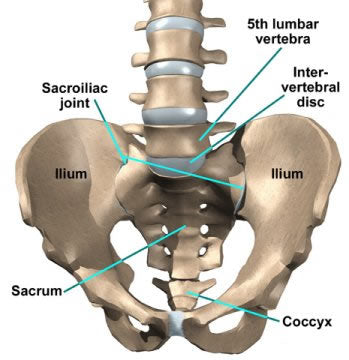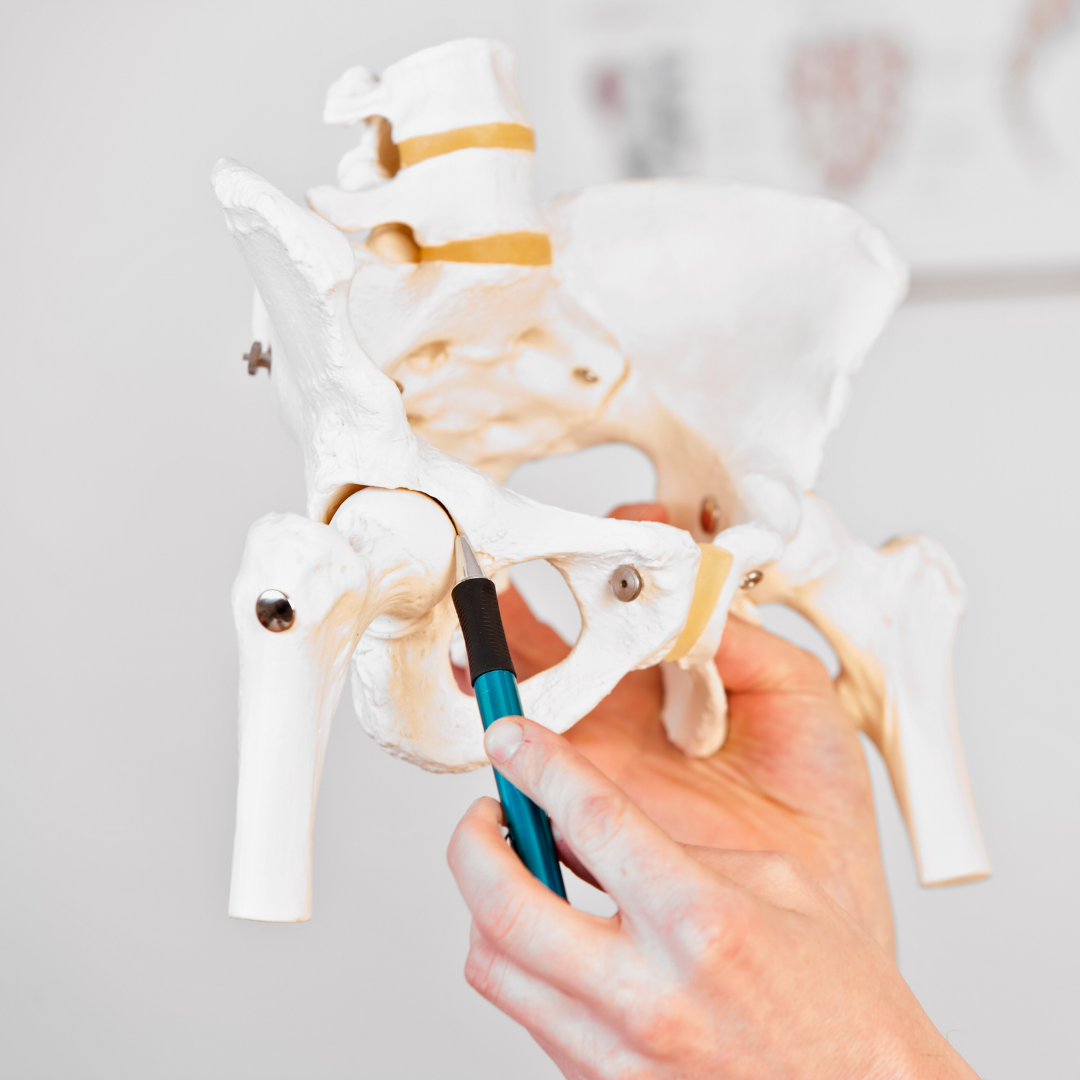
What is a SI joint?
The sacroiliac joint connects the sacrum (triangular bone at the bottom of the spine) with the pelvis (iliac bone that is part of the hip joint) on each side of the lower spine. It transmits all the forces of the upper body to the pelvis and legs.
Sacroiliac (SI) joint dysfunction is typically a very painful condition. Because of their anatomical position, SI joints can sometimes be considered part of your lower back or your pelvis. These joints support the upper body when it’s in an erect position.
If you have SI joint dysfunction, you may feel pain in various parts of your lower body, including the spine, buttocks, hips, groin and legs.
Many patients with SI joint pain tend to think they either have sciatica or tail-bone pain. Although it can resemble other conditions, SI joint dysfunction is a distinct condition of its own.

Sacroiliac Joint Dysfunction Symptoms
SI joint problems are a common cause of low back pain. Additional symptoms may be characterized by the following:
- Pain in the thigh and/or buttock, and possibly pain that radiates down the sciatic nerve, although it rarely radiates into the foot
- More commonly experienced on one side of the body, but may occur on both sides
- More commonly found in young or middle age women.
SI joint dysfunction is often caused by a fall or injury, but it can also appear without a clear cause. Postural changes due to increased abdominal size can irritate these joints, as can muscles imbalances in the legs, lower back or hips. Sporting activities that require frequent use of these joints, such as golfing and figure skating, may result in SI joint dysfunction.
This joint problem often affects pregnant women. Hormonal changes occurring during pregnancy can cause ligaments to relax. When this happens, the SI joints have a more extended range of motion.
This broader flexibility can lead to abnormal wear and stress on these joints.
Fortunately, chiropractic can help in this situation. A study revealed “91% of women with sacroiliac/pelvic subluxations and lower back pain reported relief of pain with chiropractic adjustments.”

Treatment goal
The chiropractic treatment goal for sacroiliac joint pain is to utilize a method that is best tolerated by the patient and yields the best outcome. Patients respond better to different approaches, so the chiropractor may adopt various manipulations to treat the patient's sacroiliac joint pain.
For the first 72 hours after the onset of pain, you should attempt to limit your activities that cause soreness and apply ice to the affected area for 5-10 minutes at a time to decrease inflammation.
Restoring normal joint mobility is the next goal. If your chiropractor discovers that SI joint restrictions are part of the problem, chiropractic adjustments will be used to restore alignment and function. If joint instability is suspected, you may also be asked to temporarily wear an SI belt – a device that wraps around the pelvis to stabilize the SI joints.
Finally, your chiropractor may recommend specific stretching or strengthening exercises, combined with regular chiropractic adjustments, to balance the alignment of your pelvis in the long term.

